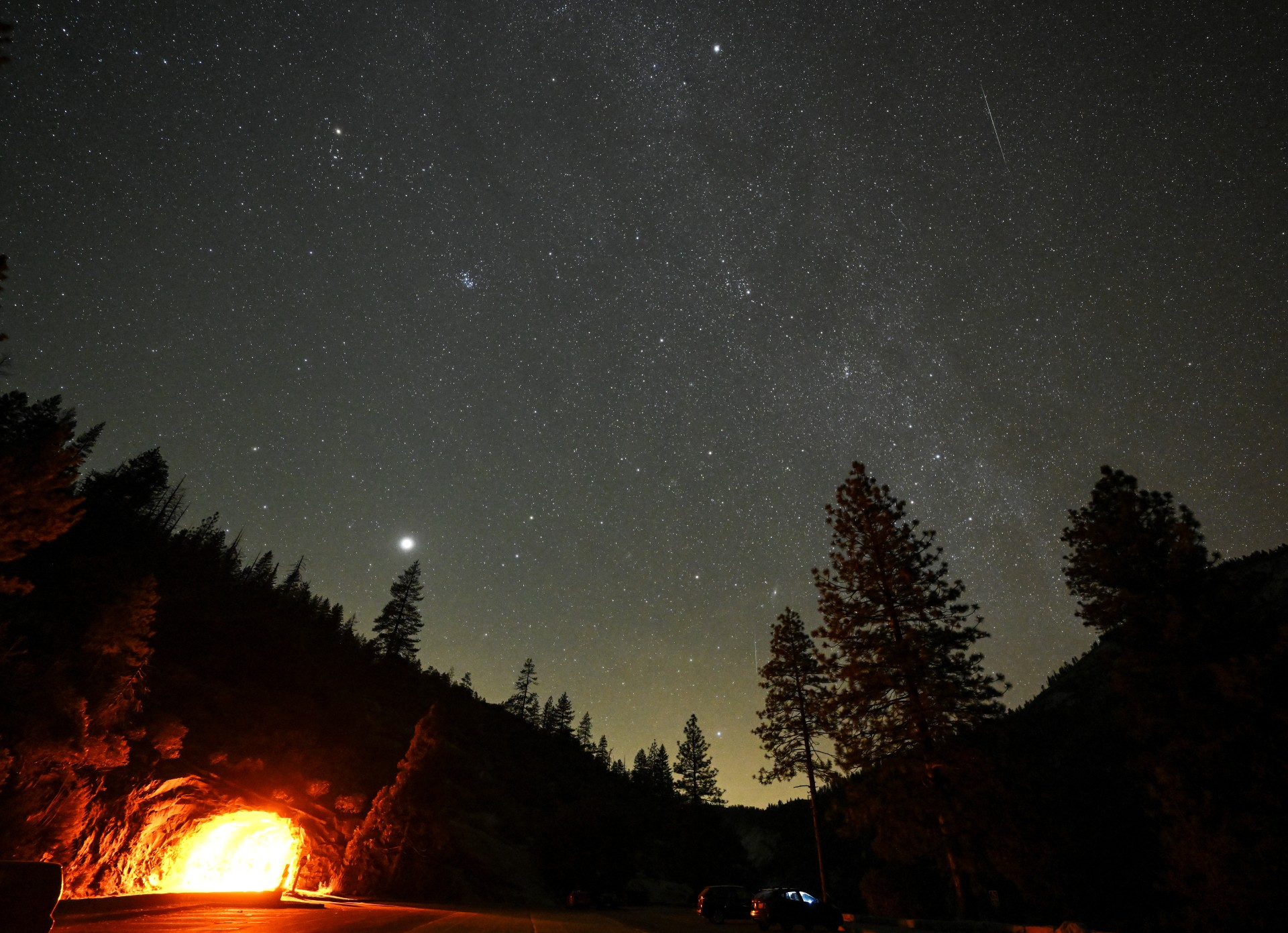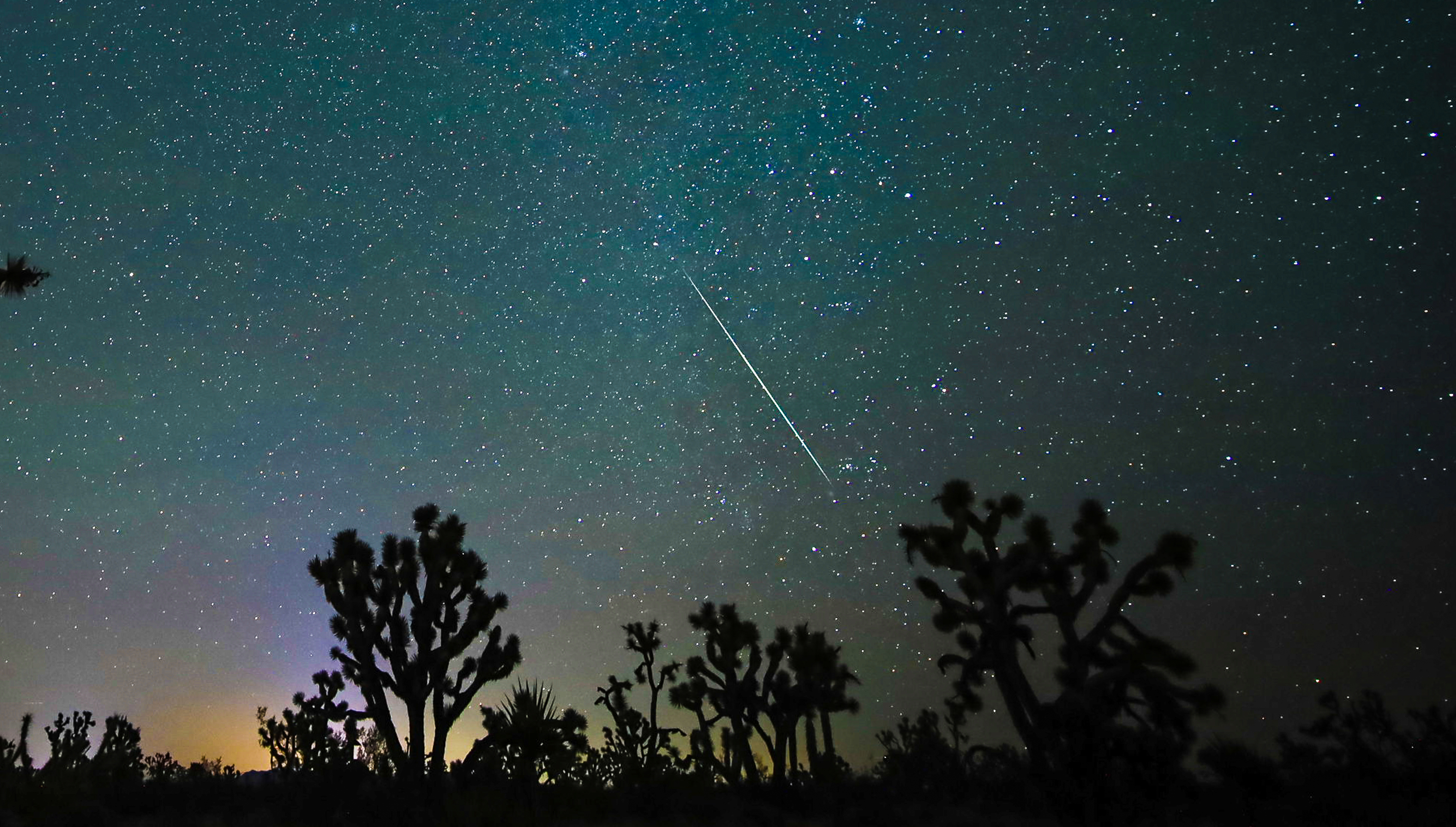
The Geminid meteor shower stunned in its first of two peak nights in 2023.
Photos from around the world showed Geminid meteors streaking through the sky overnight on Wednesday (Dec. 13), and more "shooting stars" are expected on Thursday (Dec. 14). The new moon, only two days old, should allow for peaks of as much as 100 meteors per hour this year, according to SpaceWeather.com.
Webcasts are also available to check out the show if you can't get outside or you're clouded out. Both the the Slooh telescope network and the Virtual Telescope Project in Rome, Italy are expected to livestream the shower online, pending weather.
Related: Meteor showers 2023: When is the next one?
Meteors are little bits of space dust that harmlessly fly at high speed into Earth's atmosphere, creating streaks of light as they burn away. Meteor showers tend to be associated with a particular space body; in the case of the Geminids, the source is an asteroid or space rock known as 3200 Phaethon. Every December, Earth runs into the stream of debris the asteroid leaves behind, bringing a new wave of crumbs into our atmosphere that shine as shooting stars.
Photographers worldwide watched the celestial spectacle this year, including Thilina Kaluthotage who caught the shower from Ratnapura, Sri Lanka.

The Geminids are among the only major shower not caused by debris from a comet.

The meteors were also seen above Yosemite National Park in California.

Photographer Fatih Aktas saw the shower over Lanoka Harbor in New Jersey.

Geminids and in some cases, auroras shone in the night sky of users of X (formerly Twitter), who posted the results online.
The official X account of the Stongehenge monument in Salisbury, England posted an image of Geminids seen above the iconic prehistoric landmark.
A stunning meteor shower filled the sky over Stonehenge last night. ☄️✨While the dazzling display has been visible for a few days already, the Geminids meteor shower is expected to peak in the UK from around 7.30pm tonight (14 December).📷: Grant Privett pic.twitter.com/xX3N5w1HnmDecember 14, 2023
Amateur astronomer "Astro Mike" took to X to post a stunning timelapse image of dozens of Geminid meteors
The stack of 332 from my meteor camera #Geminids pic.twitter.com/dZI2Ysj2XPDecember 14, 2023
Readers also sent in their amazing meteor shots to Space.com.
"Unfortunately got too cold for me," photographer Matthew Borchert told Space.com of his photo taken near Marietta, Minnesota on Dec. 13 at about 10 p.m. "But I did get this single shot that I like," he added.

"Went out for 7 hours last night and this morning," photographer Tyler Levitt told Space.com of his images, taken in the Joshua Tree forest roughly 45 minutes south of Las Vegas.

"Saw hundreds of meteors, with several dozen bright enough to capture in these images," Levitt wrote. "Some images caught multiple meteors."

If you want to photograph the Geminids or any other meteor shower, be sure to check out our how to photograph meteors and meteor showers guide. And if you need imaging gear, consider our best cameras for astrophotography and best lenses for astrophotography.
Editor's note: If you snap a great photo of the Geminid meteor shower that you'd like to share with Space.com and our news partners for a story or image gallery, send images and comments to spacephotos@space.com.







